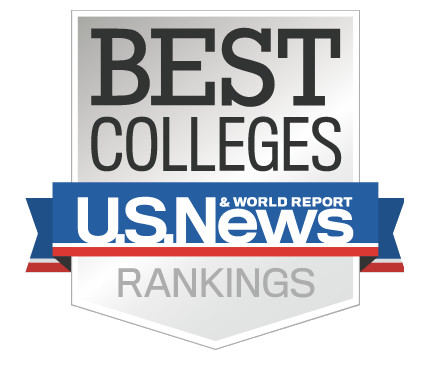
College. The word itself brings to mind lecture halls full of students, fraternities, sororities, and bowl games. Depending on your age, when you hear the word “college” you may start reminiscing about staying up late and studying for midterms. Or maybe you think back to your best friend or “someone special” that you met while attending college.
We’ve been told that college is necessary to be successful in life. In fact, we’re told that getting into one of the best schools virtually guarantees success. And, when you think of the “best school” you need only turn to U.S. News and World Report to find the best colleges in the country. Depending on the year, the top schools in the nation usually include the likes of Princeton, Harvard, Yale, Stanford, Pomona College, and Claremont McKenna. These rankings change from year to year with each school jockeying for the top position.
Yale or Jail
Many high school guidance counselors consider this list “gospel.” At many high schools, there’s a “Yale or jail” mentality. Many students are pushed into “college prep” classes as if those classes are the only route to success. Talk to most high school principals and they can tell you immediately exactly how many of last year’s graduates went to a top-ranked school. It’s a real sense of pride for the school officials.
To understand how ingrained this feeling of attending college and receiving a diploma is, one need only look at three-time Oscar winner Steven Spielberg. After dropping out of college in the early 1970s, to accept a contract with Universal, in 2001 Spielberg returned to California State University, Long Beach (CSULB) to complete his education. And, in 2002, 33 years after dropping out of college, he rented a cap and gown and proudly sat among the 500 other graduates on the CSULB campus. When his name was called he walked across the stage to receive his diploma.
It’s interesting to note that neither of Spielberg’s partners at DreamWorks Animation, David Geffen or Jeffrey Katzenberg, have a degree. In fact, there are many notable individuals who have never completed college. Billionaire Bill Gates dropped out of Harvard, as did billionaire Mark Zuckerberg. Steve Jobs only attended college for six months. And, after attending Stanford University for two years, Tiger Woods left school and went on to become one of the highest paid athletes in the world.
College Dropout Rates
When discussing college attendance and graduation rates we must consider the effect these have on the country and our industry. The truth is, more than 30% of high school graduates never attend college. And, of those that do start college, 1 in 3 will not return for their second year. The college dropout rate gets worse with half of the students who begin college never graduating. That means that 60% of high school graduates never attend or finish college.
Based on these numbers, if you take a high school graduating class of 500 students 150 of those will not enter college. And, of the ones that do enter, only 175 will earn a degree. That leaves 325 individuals without a college degree. And get this; of the ones that do receive a degree, 67% will not find work in their field of study.
We want our children to be happy
These statistics have a direct impact on the printing and graphics industry. First, I want to be clear, I believe in the importance of a college education. As I mentioned in an earlier post, I graduated from Claremont McKenna College with a degree in Economics/Accounting and in Mathematics. And, for those taking notes, US News and World Report rank my alma mater #8 in National Liberal Arts Colleges.
I am also very happy that my three children attended and completed college. And, I would never tell any parent that their child should not attend college. What I am saying is this. What makes a person successful does not come from the school they attend. It’s the drive that comes from inside their hearts that makes them succeed.
The drive that got Bill Gates into Harvard is the same drive that made him a billionaire. The drive that got Tiger Woods into Stanford University is the drive that made him one of the highest paid athletes in the world. It’s drive, passion, and the belief that one can make it in the printing, or any other industry, that makes an individual successful.
As parents we want our children to be successful but most importantly, we want our children to be happy with the life they choose and to flourish to their true potential. I believe that every parent hits a point where they stop and realize that regardless of what the parent wants when it comes to the child, their success is based on what drives the child. As such, we need to be open to all career options.
Cultivating career options
In the printing industry that I represent, this drive can be nourished from an early age. As I mentioned in my Printing Museum post, young people can be introduced to the industry with educational events like Krazy Krafts Day for Kids, Girls Scouts Book Art Patch Day, and Boy Scout Merit Badge Day.
As an industry, we can further support this drive by helping middle school, high school and college educators teach young people about the many benefits of the industry. The annual R.A.I.S.E. Foundation Surplus Drive is a great example of how we, as an industry, can help these educators.
We can also help young people, their parents, and their school administrators appreciate that the printing and graphics industry is a viable career choice. And, that college can mean different things to different people.
To some, college may mean attending a top school like Carnegie Mellon University, ranked #25 by US News and World Report. There a student can earn a Bachelor or Masters Degree with a concentration in Graphic Media Management.
To others, college may mean staying close to home and earning a Bachelor or Masters Degree at Cal Poly San Luis Obispo. There a student can choose from four different Graphic Communication concentrations. They’re ranked #1 Top Public Schools, Regional Universities West.
To still others, college may mean an Associate Degree program or even a Certificate Program that can be completed in a little as 12-18 months. Such programs exist at Fullerton College and Riverside City College.
College and the printing industry come with many educational paths that allow individuals to reach their full potential, whether a Certificate Program or a Master’s Degree.
These varied educational paths in the printing and graphic communications fields can infuse students with the drive to attend and complete a college education. This, in turn, will help these students and the industry.




